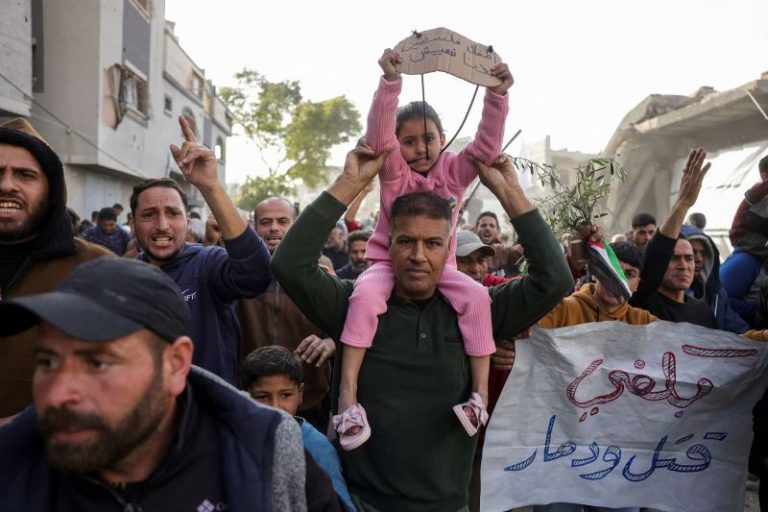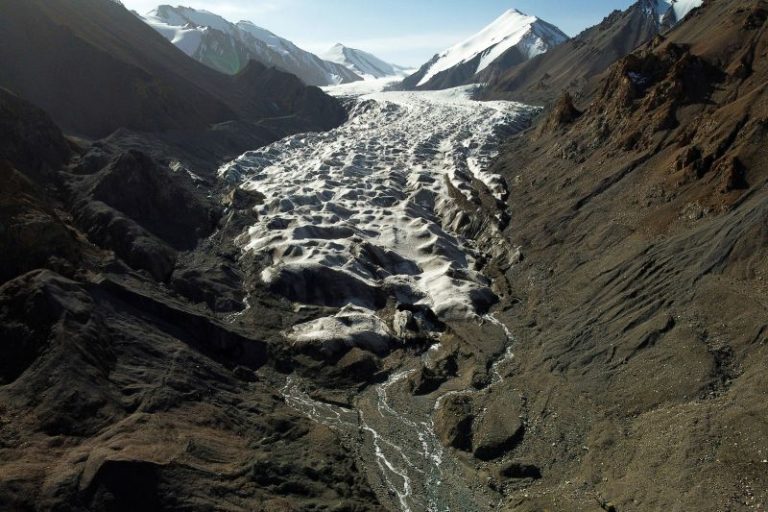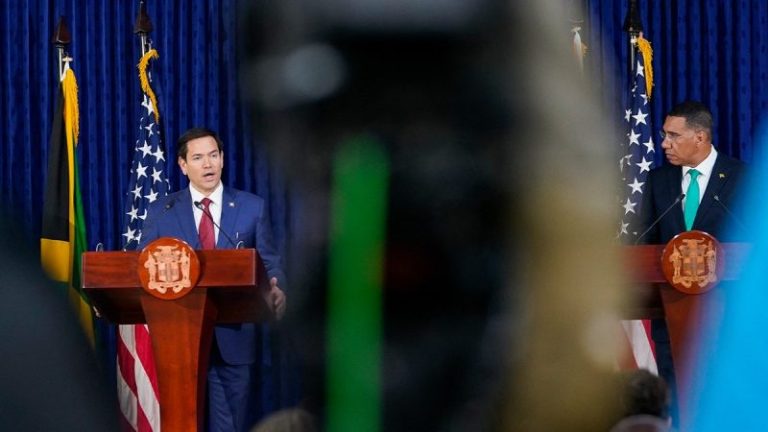Belal Abu Zaid, a Palestinian from northern Gaza, took to the streets alongside hundreds of others on Tuesday to protest against Israel’s war and the Palestinian militant group Hamas – both of which he blames for bringing destruction to the enclave.
Israel, he says, is primarily to blame for Gaza’s misery, but Hamas also carries responsibility.
Palestinians demonstrated against Hamas in Beit Lahia, northern Gaza, on Tuesday, in what appeared to be the largest protest against the militant group since the October 7 attacks.
A message shared on social media appeared to call for nine anti-war and anti-Hamas demonstrations across Gaza on Wednesday, with the protest organizers saying, “our voices must reach all the spies who sold our blood.”
More than 1,200 people were killed in the October 7 attacks on Israel and 251 taken hostage, according to Israeli authorities. Israel’s subsequent war on Hamas in Gaza has so far killed more than 50,000 Palestinians, according to the health ministry there, flattened large swathes of the territory and spurred a devastating humanitarian crisis.
The death toll in the enclave has surged in recent days following the collapse of a two-month ceasefire, with Israel relaunching its ground operation in Gaza and pledging to intensify its operations. The crisis has been compounded by Israel’s decision to halt all aid from entering the enclave.
Many Palestinians who don’t support Hamas often refrain from criticizing it publicly, fearing social ostracization, as the militant group is seen by some as the only party actively resisting Israel’s occupation of Palestinian land. Others hide their support for the group, wary of being targeted by Israel.
“The people’s voices must come before the sound of gunpowder,” Abu Hamouda said, adding that Palestinians should have one unified government that can receive international and regional support.
“People have long wanted to protest,” he said. Many were reluctant, however, fearing “lack of protection” on the streets and “accusations of treason” by other Palestinians, he added.
Abu Hamouda also worried that the Israeli government might take advantage of the protests, which would undermine their movement.
In a Wednesday speech at Israel’s parliament, the Knesset, Israeli Prime Minister Benjamin Netanyahu referred to the Gaza protests, saying this “shows that our policy is working.”
“In recent days, we have seen something we’ve never seen before – open protests in the Gaza Strip against Hamas rule,” Netanyahu said.
An Islamist organization with a military wing, Hamas has ruled Gaza since 2007, after it beat rival political party Fatah in elections and expelled the Palestinian Authority from the enclave. The group first came into being in 1987. It was an offshoot of the Muslim Brotherhood, a Sunni Islamist group that was founded in the late 1920s in Egypt.
Israel, under international law, has been the occupying power in Gaza since long before the October 7 attack, as it has always controlled the points of entry and exit. Hamas, like most Palestinian factions and political parties, says that it is trying to liberate the Palestinian territories.
Hamas is designated as a terrorist group by the United States, the European Union and Israel.
Protests are ‘spontaneous,’ Hamas says
Hamas’ Government Media Office (GMO) in Gaza has said that anti-Hamas slogans chanted at a demonstration on Tuesday were “spontaneous” and “do not reflect the general national position.”
The Hamas office said Palestinians’ right to express their opinions and participate in peaceful demonstrations is a “legitimate right, and an essential part of the national values we believe in and defend,” adding that the protests were reflective of the “tremendous pressure and daily massacres our people are subjected to.”
Abdullah Ahmed, an activist from Jabalia, said there are concerns Hamas will crack down on protests if they continue.
Ahmed said that pressure has nonetheless mounted on Gazans, and that many were further devastated to return north and find their homes turned to rubble.
“Why now? Because people are squeezed.”
Then-US Secretary of State Antony Blinken said in January that “Hamas has recruited almost as many new militants as it is lost.”
“Each time Israel completes its military operations and pulls back, Hamas militants regroup and re-emerge because there’s nothing else to fill the void,” he said at in a speech at the Atlantic Council just days before his term as top US diplomat came to an end.
Gazans’ support for the October 7 attack appears to have oscillated in recent months. A survey conducted by the Palestinian Center for Policy and Survey Research said in June that 57% of Gazans believed that the attack was the right decision, down from 71% just three months earlier.
As the war has dragged on, living conditions have only deteriorated further in Gaza.
Asked whether he feared retribution from Hamas for protesting, Abu Zaid said it is hard to fear persecution when the enclave is rampant with suffering.
“There is no more fear. Death can happen at any minute, we’ve seen death with our eyes,” he said. “The smell of blood is everywhere.”
“Enough war, enough exhaustion, enough humiliation.”










